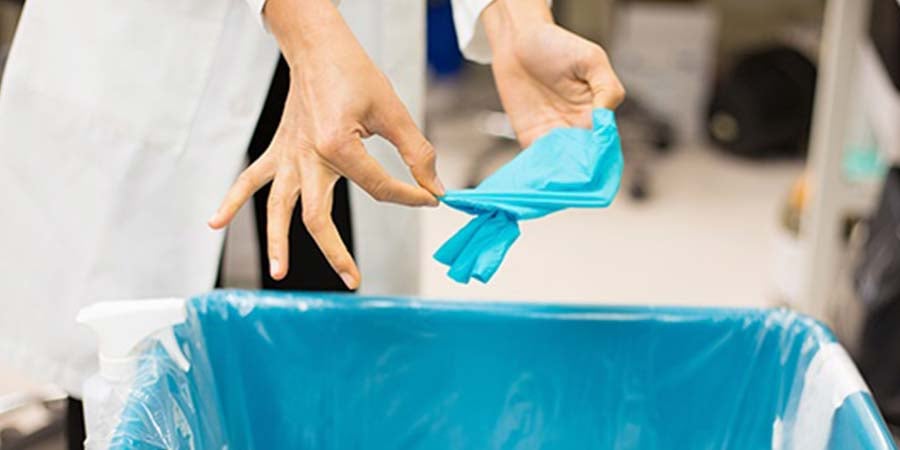Share this
Infection Control In Hospitals Includes Air Quality
by HEPACART on Mar 09, 2022
Air quality issues compromise patient safety and infection control in hospitals.
When someone is admitted to a hospital, they expect that they’ll get better, not sicker. Sometimes, despite all possible treatments, conditions worsen. But a patient getting sicker because of easily preventable air quality issues isn’t acceptable. Keeping the air clean isn’t just a matter of patient comfort; it’s a matter of patient safety. Purifying the air is a necessary part of infection control in hospitals.
Forming an Infection Prevention & Control Team
Infection control in hospitals relies on teams of professionals coming together in every area of hospital operations to create safe conditions for everyone. The Infection Prevention and Control Team needs to research, document, and implement measures to protect patient health.
Following ICRA Guidelines for Construction
You may have heard of the term Infection Control Risk Assessment (ICRA). These are assessment guidelines that ensure clean air during construction and renovation, which can cause air quality to degrade rapidly due to dust and other contaminants. If not contained, they can make their way around the hospital through air ducts, finding their way into patient rooms, getting stuck to clothing, and settling in areas where they can get picked up and begin the cycle again.
The ICRA matrix identifies possible sources of contaminants and at-risk patient groups, analyzes the type of work to be done, ranks the harmfulness of the pollutants, and recommends countermeasures to fight their spread. Activities as invasive as cutting drywall to a painting job that creates large amounts of hazardous fumes must be mitigated to keep them from harming patients.
Creating Clean Habits
It’s one thing to set up policies that people should follow; it’s something else to make those policies into routines. Let’s stick with the idea of construction crews coming in to do work. Patients should already be separated from them, but this is only possible to a certain degree. The workers coming into your hospital will have to follow some guidelines and expect to be reminded of them. Once they’ve followed these guidelines enough, they should become habits, but you’ll still have to stay on top of them.
Here are a few essential guidelines.
1. Require workers to obey Covid-19 guidelines by maintaining proper distance, wearing masks, and washing hands regularly.
2. Set up hand sanitizer stations for those who won’t get to a sink often.
3. Ensure the cleaning crew does a spotless job cleaning up after the construction.
4. Ensure HVAC systems are up to the task by changing filters frequently and engaging in routine preventive maintenance.
These are just a sample of some of the rules and practices that should be in place to guarantee patient safety. It’ll be up to you to make sure they get done.
Investing in Indoor Air Purification
Let’s clear the air. No, we’re not going to have an airing of grievances. Let’s literally clear the air. In addition to construction debris, dust, and fumes, you still have to be concerned about HAIs, or Healthcare-Associated Infections. We know that surfaces need to be adequately cleaned but don’t discount pathogens making their way around a facility by air travel. A study in the Journal of Hospital Infection reported that air purification resulted in a 45% reduction in HAIs at St. Mary’s Hospital for Children.
Let’s go over some ways HEPAFORCE® can make your hospital’s air far safer.
Air Purification with HEPAFORCE® Air Purifiers
Air purifiers are the most obvious way to purify the air. The HEPAFORCE® GermBuster or the HEPAFORCE® GermBuster+ with UV-FORCE® are excellent choices for cleaning bad air full of contaminants and germs, making it clean and safe. Let’s go over the differences between the two and why you might want one over the other.
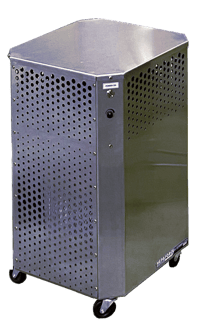
GermBuster 300: This indoor air purifier can clean 800 cubic feet of air 24 times per hour, 3,200 cubic feet 6 times per hour, and 6,400 cubic feet 3 times per hour. Air moves continually through the GermBuster 300’s HEPA filter, capturing 99.97% of particles over 0.3 microns. This is enough to capture airborne particles carrying COVID-19.
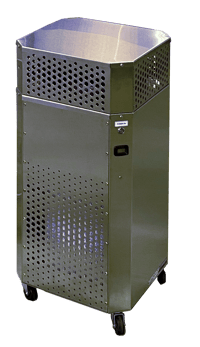
GermBuster with UV-FORCE: This option has the same HEPA-filter performance and cubic feet of air ratings as the GermBuster 300, but the difference is that the GermBuster with UV-Force doesn’t just trap pathogens and viruses — it actively destroys them in its far-UVC light chamber.
Both units are easy to clean and maintain, plus their controls are simple to figure out for anyone responsible for running it. The controls can even be hidden behind a locked panel to keep curious hands from messing with the settings.
Dust Containment with HEPACART® Mobile Carts
When it’s time to remove ceiling tiles or perform electrical or ductwork, the HEPACART® Classic and HEPACART® Auto Lift mobile dust containment carts will keep dust and debris from making their way into the air. Let’s go over their features.
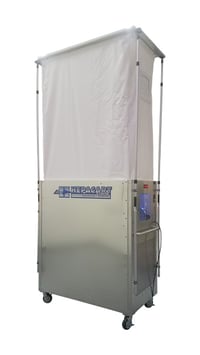
HEPACART Classic: With a hood that gets pulled up to form a seal around the work area, the HEPACART Classic is a safe, efficient way to get work done while maintaining patient safety and health. In fact, it’s the only containment cart you can buy that has an embedded HEPAFORCE® AIR Negative Air Machine & Scrubber that’s independently inspected and certified.
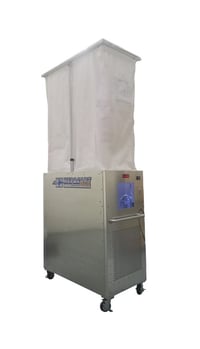
HEPACART Auto Lift: This dust containment cart has the same features as the HEPACART Classic, but the Auto Lift, as its name would suggest, raises and lowers automatically with the push of a button instead of manually.
Either way, you get top-notch protection from nasty construction debris coming down and putting unhealthy stuff into your nice, clean hospital air.
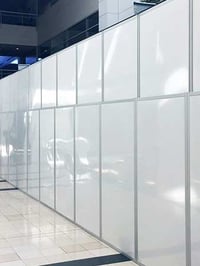
Dust Containment with STARC® LiteBarrier™
If you're doing light construction near patients, you can set up STARC LiteBarrier temporary construction walls to contain dust and airborne particles. This telescoping airtight removable wall fits any space and exceeds ICRA Class IV requirements. Because these reusable panels are durable and cleanable, you can use them for many projects. If you need sound deadening, you can go with STARC® Systems RealWall™, but they cost more.
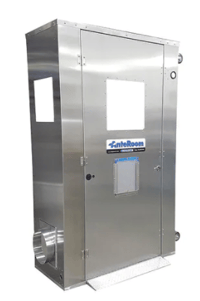
Dust Containment with HEPACART® AnteRoom
If you’ve ever seen a sci-fi movie and a spaceship has an airlock, then you already get the idea of the AnteRoom. It’s an aluminum module that magnetically seals to door frames, creating a temporary room isolation module. It can serve as an entryway or vestibule into any larger room undergoing maintenance, renovation, or construction. It installs in less than five minutes and pays for itself after just one project. See for yourself here (video).
Download Our Guide to Infection Control in Hospitals
Keeping a hospital filled with sick and infirmed people as healthy as possible while renovating can be a big challenge. But we’re here to make sure you meet that challenge. With HEPACART’s Guide to Infection Control in Hospitals, you’ll discover more infection control methods than mentioned here. Continue to take critical steps toward protecting patient safety, continually improving your infection control strategies and best practices.
